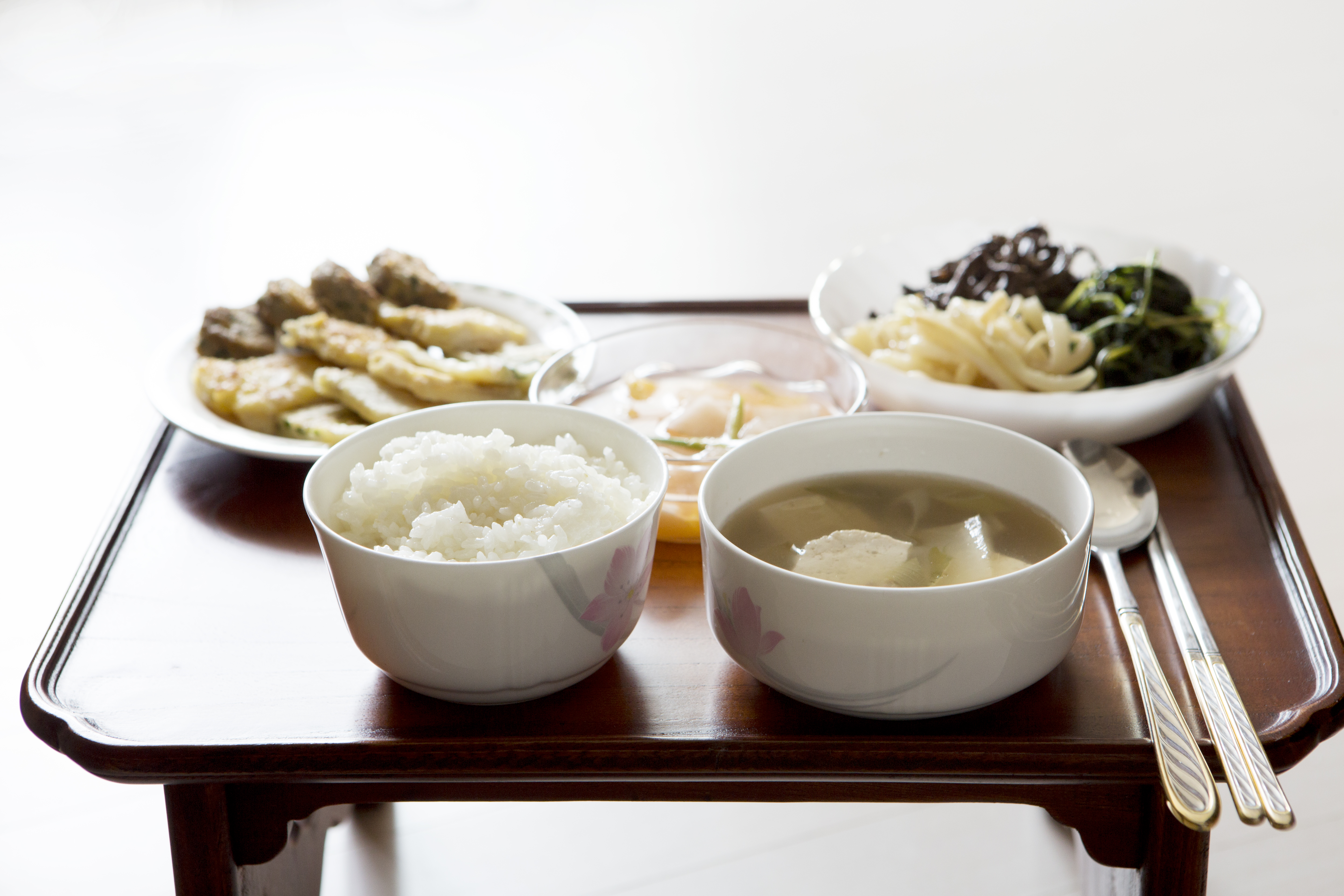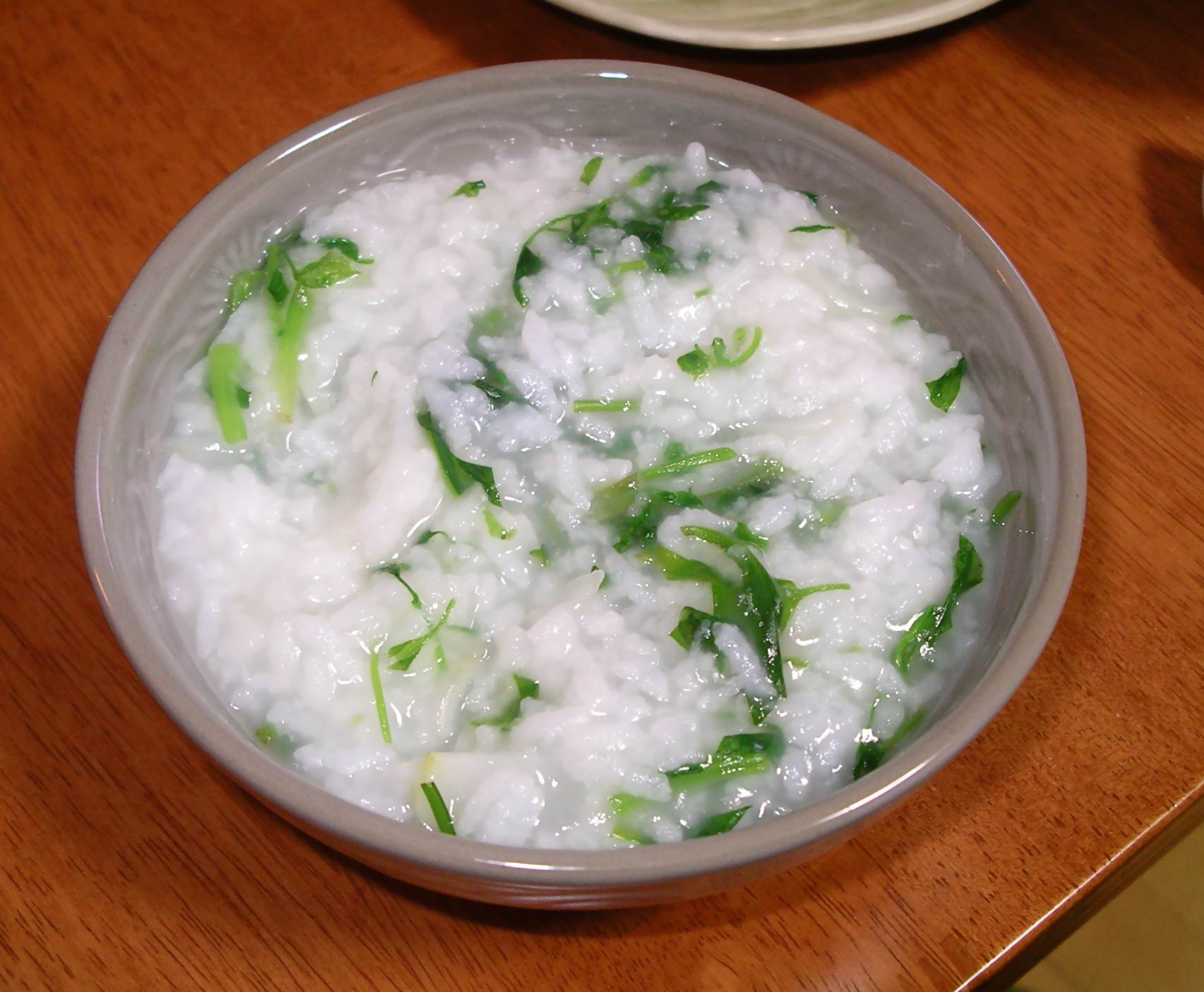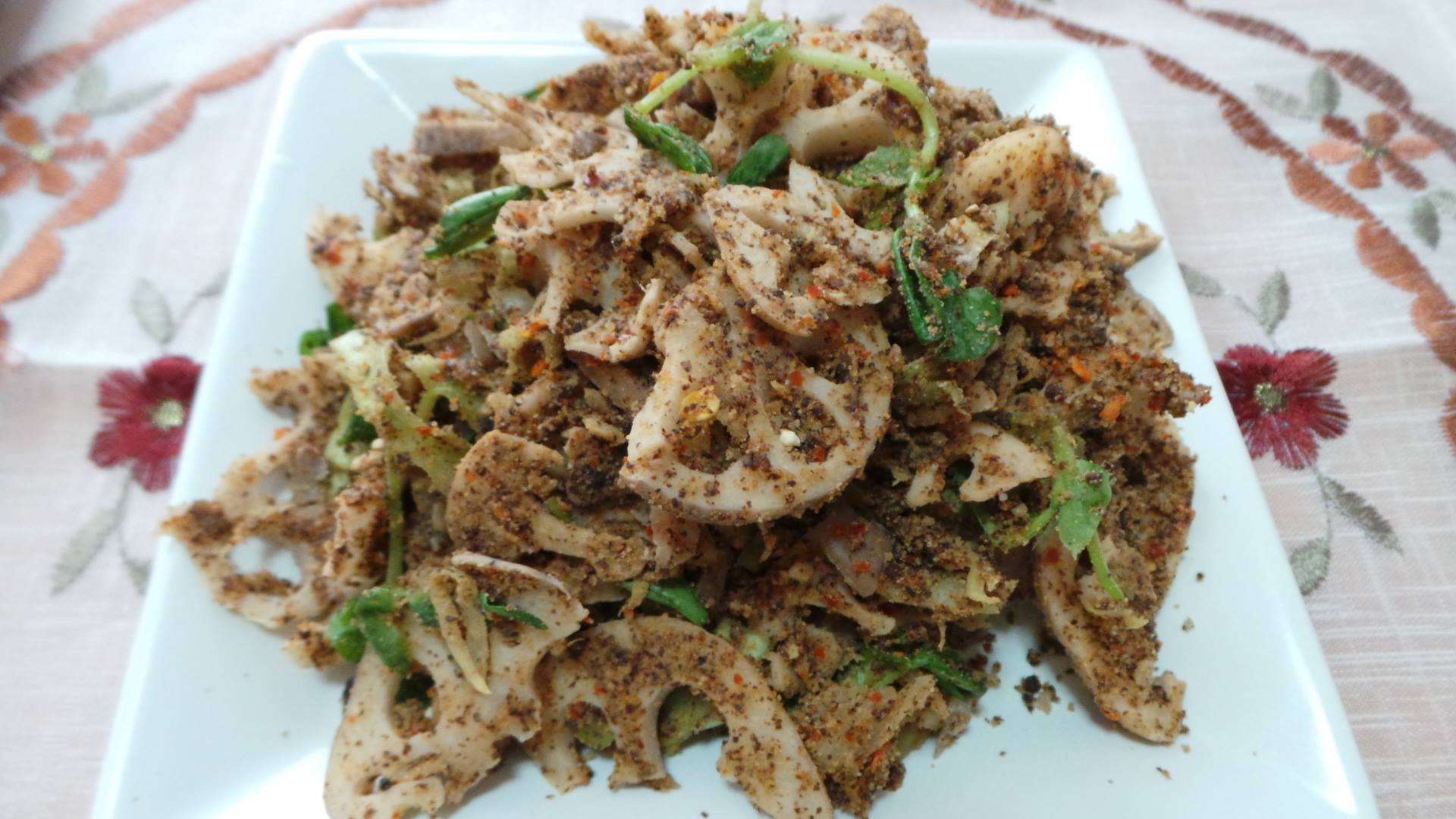|
Oenanthe Javanica
''Oenanthe javanica'', commonly Java waterdropwort, water celery, water dropwort, Chinese celery, Indian pennywort and Japanese (flat leaf) parsley, is a plant of the genus '' Oenanthe'' originating from East Asia. It has a widespread native distribution in temperate Asia and tropical Asia, and is also native to Queensland, Australia. This plant should not be confused with the plants of the genus ''Cryptotaenia'', sometimes called "Japanese wild parsley" (''mitsuba'' in Japanese), ''Apium graveolens'' var. ''secalinum'' which is also called "Chinese celery", or other plants called "water dropwort" and "water celery". Description ''Oenanthe javanica'' is a perennial herb that grows to about 1 m in height, with fibrous roots that emerge from all nodes, and flowers with 5 white petals and 5 stamens. The leaves are aromatic, glabrous, and have a sheath covering the stem. The leaflets are divided into lobes and crinkled. The 'Flamingo' variety has colorful pink edges. The plant grow ... [...More Info...] [...Related Items...] OR: [Wikipedia] [Google] [Baidu] |
Manipuri Cuisine
Manipuri cuisine refers to the cuisine of Manipur, a state of northeastern India. Daily meals are based on rice, with a few side dishes of vegetables, fish and meat. A meal would usually have a vegetable stew called or , flavored with dried or fried fish; stir-fried vegetables called ; and a spicy item, which could be (a chilli paste), (boiled and mashed vegetables with chilli and fermented fish), or (a piquant salad). All piquant side dishes are accompanied by a choice of fresh herbs, collectively called . The base and essence of Meitei cuisine is the fermented fish called . Several dishes of meat, mostly chicken and pork, are cooked with unique recipes. As a result of religious taboos, however, the Meitei Pangals do not cook the latter. A side of steamed () or boiled vegetables with a hint of sugar () are also quite common as palate cleansers in most meals. The aromatics of most dishes start with frying bay leaf, chives, onion, garlic, and ginger in mustard oil. The rest o ... [...More Info...] [...Related Items...] OR: [Wikipedia] [Google] [Baidu] |
Carl Ludwig Blume
Charles Ludwig de Blume or Karl Ludwig von Blume (9 June 1796, Braunschweig – 3 February 1862, Leiden) was a German-Dutch botanist. He was born at Braunschweig in Germany, but studied at Leiden University and spent his professional life working in the Dutch East Indies and in the Netherlands, where he was Director of the Rijksherbarium (state herbarium) at Leiden. His name is sometimes given in the Dutch language form Karel Lodewijk Blume, but the original German spelling is the one most widely used in botanical texts: even then there is confusion, as he is sometimes referred to as K.L. Blume (from Karl). He carried out extensive studies of the flora of southern Asia, particularly in Java, then a colony of the Netherlands. From 1823 to 1826 Blume was Deputy Director of Agriculture at the botanic garden in Bogor (Buitenzorg) in Java. In 1827 he became correspondent of the Royal Institute of the Netherlands. In 1855, he was elected a foreign member of the Royal Swedish Ac ... [...More Info...] [...Related Items...] OR: [Wikipedia] [Google] [Baidu] |
Indonesia
Indonesia, officially the Republic of Indonesia, is a country in Southeast Asia and Oceania between the Indian and Pacific oceans. It consists of over 17,000 islands, including Sumatra, Java, Sulawesi, and parts of Borneo and New Guinea. Indonesia is the world's largest archipelagic state and the 14th-largest country by area, at . With over 275 million people, Indonesia is the world's fourth-most populous country and the most populous Muslim-majority country. Java, the world's most populous island, is home to more than half of the country's population. Indonesia is a presidential republic with an elected legislature. It has 38 provinces, of which nine have special status. The country's capital, Jakarta, is the world's second-most populous urban area. Indonesia shares land borders with Papua New Guinea, East Timor, and the eastern part of Malaysia, as well as maritime borders with Singapore, Vietnam, Thailand, the Philippines, Australia, Palau, and India ... [...More Info...] [...Related Items...] OR: [Wikipedia] [Google] [Baidu] |
Namul
Namul ( ko, 나물) refers to either a variety of edible grass or leaves or seasoned herbal dishes made of them. Wild greens are called ''san-namul'' (, "mountain namul"), and spring vegetables are called ''bom-namul'' (, "spring namul"). On the day of Daeboreum, the first full moon of the year, Koreans eat ''boreum-namul'' (, "full moon namul") with five-grain rice. It is believed that boreum namuls eaten in winter help one to withstand the heat of the summer to come. Preparation and serving For namul as a dish, virtually any type of vegetable, herb, or green can be used, and the ingredient includes roots, leaves, stems, seeds, sprouts, petals, and fruits. Some seaweeds and mushrooms, and even animal products such as beef tendons are also made into namuls. Although in most cases the vegetables (and non-vegetable namul ingredients) are blanched before being seasoned, the method of preparation can also vary; they may be served fresh (raw), boiled, fried, sautéed, fermente ... [...More Info...] [...Related Items...] OR: [Wikipedia] [Google] [Baidu] |
Congee
Congee or conjee ( ) is a type of rice porridge or gruel eaten in Asian countries. It can be eaten plain, where it is typically served with side dishes, or it can be served with ingredients such as meat, fish, seasonings and flavourings, most often savory, but sometimes sweet. It is typically served as a meal on its own, especially for breakfast or people who are ill. Names for congee are as varied as the style of its preparation, but all are made with rice cooked as a softened porridge with a larger quantity of water than other types of cooked rice like pilaf or claypot rice. Etymology The English word ''congee'' is derived from the Tamil word ''kanji'' (, ''kañci'', ). In Chinese, it is known as ''zhou'' (). It is mentioned in the ''Book of Rites'' and noted in Pliny’s account of India circa 77 CE. Preparation To prepare the dish, rice is boiled in a large amount of water until it softens significantly. Congee can be made in a pot or in a rice cooker. Some rice cookers ... [...More Info...] [...Related Items...] OR: [Wikipedia] [Google] [Baidu] |
Nanakusa-no-sekku
The Festival of Seven Herbs or ''Nanakusa no sekku'' ( ja, ) is the long-standing Japanese custom of eating seven-herb rice porridge (七草粥, ''nanakusa-gayu'', lit. "7 Herbs Rice-Congee") on January 7 (''Jinjitsu''); one of the ''Gosekku''. History The seventh of the first month has been an important Japanese festival since ancient times. Jingchu Suishiji, written in the Six Dynasties China, recorded the Southern Chinese custom of eating a hot soup that contains seven vegetables to bring longevity and health and ward off evil on the 7th day of the first month of the Chinese calendar. Since there is little green at that time of the year, the young green herbs bring color to the table and eating them suits the spirit of the New Year. The custom was present in Taiwan until the mid-Qing Dynasty, and is still present in parts of rural Guangdong province. Seven spring flowers The ''nanakusa'' (), or more specifically, ''haru no nanakusa'' (), spring's seven flowers (or herbs), ... [...More Info...] [...Related Items...] OR: [Wikipedia] [Google] [Baidu] |
Singju
Singju ( mni, ꯁꯤꯡꯁꯨ; ''pronounced sing-zoo'') is a dish from Manipur. It originated with the Meitei-culture but has been widely adopted by most of the ethnic communities of the state and in some neighbouring states of Northeast India. Often served as a spicy side dish, it is also a popular as an afternoon or evening snack. Given that its main ingredient are seasonal vegetables, Singju has many variations. However, there are two main types: Ngari-based and Thoiding-Besan based. Ngari is a kind of fermented fish, the flavor of which forms the backbone Manipuri cuisine. Roasted Ngari-based Singju is more popular in all homes, however it is not usually sold by local Singju vendors due high cost of Ngari. The Thoiding-Besan version therefore is more widely available from Singju vendors. Thoiding is an oily seed obtained from the plant Perilla frutescens which when roasted gives a nutty flavor. A mixture of roasted thoiding and roasted besan give a delicious flavor that is ... [...More Info...] [...Related Items...] OR: [Wikipedia] [Google] [Baidu] |
Eromba
Eromba is an ethnic dish of the Meitei community of Manipur, India. History The word "eromba" comes from "eeru taana lonba", a Meitei term for a liquid that is mixed. Preparation The vegetables (such as potatoes and garlic), spices (such as chilies) and herbs are boiled with or without ngari then smashed with hands, whisked with a whisker or blend with a blender. See also *Cuisine of Manipur Manipuri cuisine refers to the cuisine of Manipur, a state of northeastern India. Daily meals are based on rice, with a few side dishes of vegetables, fish and meat. A meal would usually have a vegetable stew called or , flavored with dried or ... References {{reflist Manipuri cuisine Chutney ... [...More Info...] [...Related Items...] OR: [Wikipedia] [Google] [Baidu] |
Manipur
Manipur () ( mni, Kangleipak) is a state in Northeast India, with the city of Imphal as its capital. It is bounded by the Indian states of Nagaland to the north, Mizoram to the south and Assam to the west. It also borders two regions of Myanmar, Sagaing Region to the east and Chin State to the south. The state covers an area of . Manipur has been at the crossroads of Asian economic and cultural exchange for more than 2,500 years. It connects the Indian subcontinent and Central Asia to Southeast Asia, East Asia, Siberia, regions in the Arctic, Micronesia and Polynesia enabling migration of people, cultures and religions. During the days of the British Indian Empire, the Kingdom of Manipur was one of the princely states. Between 1917 and 1939, some people of Manipur pressed the princely rulers for democracy. By the late 1930s, the princely state of Manipur negotiated with the British administration its preference to continue to be part of the Indian Empire, rather than part of B ... [...More Info...] [...Related Items...] OR: [Wikipedia] [Google] [Baidu] |
Northeast India
, native_name_lang = mni , settlement_type = , image_skyline = , image_alt = , image_caption = , motto = , image_map = Northeast india.png , map_alt = Northeast india map.png , coordinates = , coordinates_footnotes = , subdivision_type = Country , subdivision_name = , subdivision_type1 = States , subdivision_name1 = , subdivision_type2 = Largest city , subdivision_name2 = Guwahati , subdivision_type3 = Major cities (2011 Census of India) , subdivision_name3 = [Baidu] |
Italy
Italy ( it, Italia ), officially the Italian Republic, ) or the Republic of Italy, is a country in Southern Europe. It is located in the middle of the Mediterranean Sea, and its territory largely coincides with the homonymous geographical region. Italy is also considered part of Western Europe, and shares land borders with France, Switzerland, Austria, Slovenia and the enclaved microstates of Vatican City and San Marino. It has a territorial exclave in Switzerland, Campione. Italy covers an area of , with a population of over 60 million. It is the third-most populous member state of the European Union, the sixth-most populous country in Europe, and the tenth-largest country in the continent by land area. Italy's capital and largest city is Rome. Italy was the native place of many civilizations such as the Italic peoples and the Etruscans, while due to its central geographic location in Southern Europe and the Mediterranean, the country has also historically been home ... [...More Info...] [...Related Items...] OR: [Wikipedia] [Google] [Baidu] |
Vietnam
Vietnam or Viet Nam ( vi, Việt Nam, ), officially the Socialist Republic of Vietnam,., group="n" is a country in Southeast Asia, at the eastern edge of mainland Southeast Asia, with an area of and population of 96 million, making it the world's sixteenth-most populous country. Vietnam borders China to the north, and Laos and Cambodia to the west. It shares maritime borders with Thailand through the Gulf of Thailand, and the Philippines, Indonesia, and Malaysia through the South China Sea. Its capital is Hanoi and its largest city is Ho Chi Minh City (commonly known as Saigon). Vietnam was inhabited by the Paleolithic age, with states established in the first millennium BC on the Red River Delta in modern-day northern Vietnam. The Han dynasty annexed Northern and Central Vietnam under Chinese rule from 111 BC, until the first dynasty emerged in 939. Successive monarchical dynasties absorbed Chinese influences through Confucianism and Buddhism, and expanded ... [...More Info...] [...Related Items...] OR: [Wikipedia] [Google] [Baidu] |






